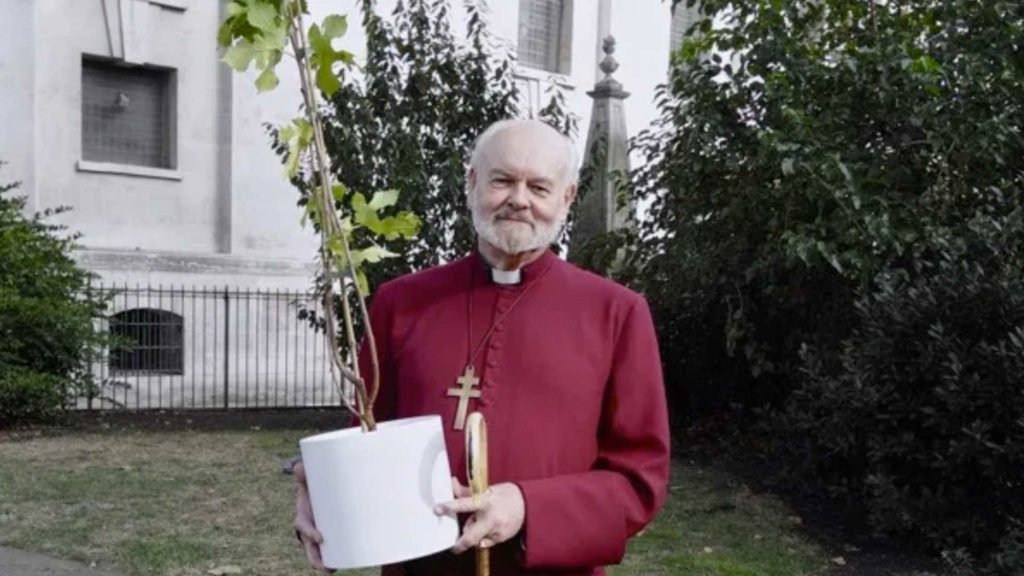We are going to be receiving some hundreds of unaccompanied child refugees and of course it was the Huguenots who gave refugee to the English language. Although I belong to the less respectable Irish Huguenot tradition, here in England 50,000 Huguenots arrived around the time of the Revocation of the Edict of Nantes, which if you look at the proportion of the population is equivalent to the arrival of 650,000 refugees today. And of course such an influx caused debate, a touch of xenophobia in parliament but almost instantly Huguenots began to make an enormous contribution to society, to the economy.
Of course the mulberry tree we are going to present to Rev Rider to be planted here when this whole garden is redesigned around it – the mulberry tree is a symbol of that great benefit to the economy because it was the essential nourishment of the silkworm and we are surrounded by the vestiges of Huguenots who worked in the silk industry. So it’s a very symbolic tree, it’s a tree that is probably derived – it comes from Chelsea Physic Garden – from a tree planted in the reign of James I. It’s a historic tree and I’m grateful again for partnership with The Conservation Foundation because they have all sorts of programmes of taking very significant trees, producing grafts. The most recent one I’ve been concerned with before this was the marvellous yew, which is associated with the signing of Magna Carta. Having killed two yew trees already in previous programmes, I’m so grateful to be given a third and I promise to do better.
But this one does look the most healthy specimen and with enormous pleasure and remembering the work of so many of so many colleagues and allies and also, most importantly, the arrival of these young refugees today, I’d like to present you, Rector, this magnificent graft from a Morus Londinium from the reign of James I.

